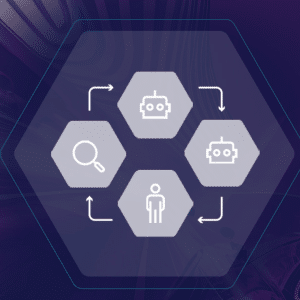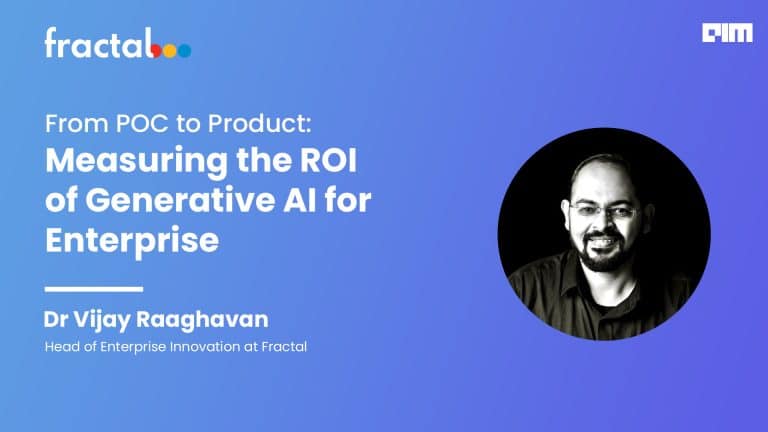With each passing week in the global AI landscape, the goalpost for building generative AI and competing with players like Google and OpenAI seems to be ever-changing. Some years ago, Google released Transformers, followed by OpenAI’s ChatGPT. This year, the conversation is around agentic AI.
Despite throwing billions of dollars, India seems to be quietly losing out in the race because that is just not enough. In 2024, the Indian tech landscape raised around $11.3 billion from investors, which is negligible compared to the West’s $184 billion.
The only brighter side is that building a product in India is far cheaper than in the West, along with the availability of a vast and affordable talent pool.
HCLTech also revealed that it is aiming to integrate AI services for 100 clients by FY26. “Generative AI is getting…real. The cost of using an LLM or conversational model has dropped by over 85% since early 2023, making more use cases viable,” said CEO and MD Vijayakumar C.
Despite this, nothing revolutionary has come out of India. “The pace of AI progress is so rapid that we simply cannot catch up by relying on engineers and researchers alone. Without big corporations or government backing, India’s GenAI dreams will remain just that – dreams,” said a researcher in a Reddit discussion titled ‘India has quietly lost the Gen-AI bus also, and no amount of investment will cover it now’.
Cost Drops for Services, Not for Building Products
Generative AI and quantum computing require billions in funding. While US giants like Google, OpenAI, Anthropic, and Microsoft lead the charge, and China uses open-source strategies to scale, India’s resources and interest in research are inadequate.
Many believe India has already missed the bus. A recurring theme in discussions with AIM is India’s lack of fundamental research in areas like Transformer architectures and their hardware execution. While countries like the US and China are making significant strides, India’s contribution remains negligible, which, to some extent, can be attributed to the lack of funding.
Developing generative AI models demands immense capital, yet India’s private sector remains reluctant to invest in long-term research. This is clearly highlighted in the earnings calls of the country’s big IT firms.
Vedant Maheshwari, CEO of quso.ai, believes foundational AI requires significant capital and patience, which is harder to secure in India. “While funding here is substantial, it’s mostly application-focused rather than foundational,” he explained.
A student from a premier Indian institute observed, “The research output from China in just the past two years has placed them decades – if not a century – ahead of us.”
The volume and quality of papers emerging from the US and Chinese institutions reflect a culture that prioritises innovation over mere service delivery. While only 1.4% of papers from India contributed to top AI research conferences, the US and China accounted for 30.4% and 22.8%, respectively.
The Indian government, possibly constrained by limited budgets, struggles to fill the gap.
This sentiment is echoed across the board. For instance, a quantum computing researcher shared how a company offered them just ₹20,000 to conduct advanced research.
So What’s the Point?
While speaking with AIM, several industry leaders agreed that there was no point in competing to build the largest LLM. To put this in perspective, TCS chief K Krithivasan recently said that there is no huge advantage in building its own LLMs in India since there are already so many available.
This aligns with the idea of Nandan Nilekani, co-founder of Infosys, making India the AI use case capital of the world.
The reason is simple – lack of capital. “Who will give $200 million to a startup in India to build an LLM?” Mohandas Pai, head of Aarin Capital and former CFO of Infosys, told AIM when asked about the lack of innovation from Indian IT.
“Why is nothing like Mistral coming from India?” he asked rhetorically. “There is nobody…Creating an LLM or a big AI model requires large capital, time, a huge computing facility, and a market. All of which India does not have.”
Though India has startups like Sarvam, TWO, and Krutrim building products, the impact that they have created when compared to something like ChatGPT is minuscule, simply due to the vast difference in investments.
Despite this, there are predictions that India will have around 100 AI unicorns over the next decade.
To put things into perspective, Anthropic is looking to raise $2 billion in a funding round, raising its valuation to $60 billion. In comparison, Krutrim raised a $50 million round, and Sarvam AI raised $41 million.
While speaking at Cypher 2024, Pai called on the Indian government to significantly increase its investment in AI. He pointed out that although the central government spends ₹90 lakh crore annually, only ₹3,000 to ₹4,000 crore is allocated for innovation – a sum he referred to as “peanuts”. “The government of India should invest ₹50,000 crore in AI.” If that happens, the Indian tech ecosystem will probably struggle with funds.
Focus on Short Term
India’s tech sector continues to prioritise short-term gains from outsourced IT services rather than investing in creating globally competitive products. Indian startups are also busy making API wrappers for SaaS instead of pushing the boundaries of core research, which is all because of funding.
Amit Sheth, the chair and founding director of the Artificial Intelligence Institute of South Carolina (AIISC), earlier told AIM that only a handful of universities are able to publish research at top conferences.
“In the USA, all the projects they get to work on involve advancing the state-of-the-art (research),” Sheth added. He also highlighted the issue of a publication racket prevalent in India and several other developing countries, with only a handful of researchers from select universities standing out as exceptions.
India’s elite institutions, such as the Indian Institute of Science (IISc), are also hamstrung by limited budgets. Notably, the institute’s entire budget is around ₹1,000 crore, which is barely enough to compete with global AI research.
India’s academic framework, especially in engineering and technology, is increasingly criticised for emphasising quantity over quality. Students are often required to publish multiple research papers, many of which lack originality.
Despite the gloomy outlook, some believe there’s hope for the future if immediate corrective measures are taken. India needs a paradigm shift in its approach to education, funding, and research. The global race in generative AI is a high-stakes game, and India appears to be losing.






























